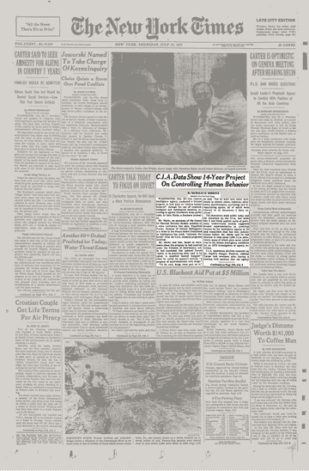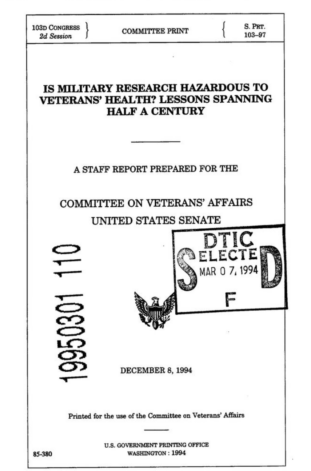The American eugenics movement received extensive funding from various corporate foundations including the Carnegie Institution, Rockefeller Foundation, and the Harriman railroad fortune. In 1906 J.H. Kellogg provided funding to help found the Race Betterment Foundation in Battle Creek, Michigan.
The first state law requiring sterilization was passed in Indiana in 1907. Thirty-one U.S. states would soon follow their lead. The Eugenics Record Office (ERO) was founded in Cold Spring Harbor, New York in 1911 by the renowned biologist Charles B. Davenport, using money from both the Harriman railroad fortune and the Carnegie Institution.
Both its founder, Charles Benedict Davenport, and its director, Harry Hamilton Laughlin, were major contributors to the field of eugenics in the United States. Its mission was to collect substantial information on the ancestry of the American population, to produce propaganda that was made to fuel the eugenics movement, and the promotion of the idea of race-betterment.
During the early 20th century, Harry H. Laughlin, director of the Eugenics Record Office at Cold Spring Harbor, New York, became concerned that states were not enforcing their eugenics laws. In 1922, he published his book, Eugenical Sterilization in the United States, which included a “MODEL EUGENICAL STERILIZATION LAW” in Chapter XV.

Although the first eugenics-based compulsory sterilization law was overturned by the Indiana Supreme Court in 1921, in the 1927 case Buck v. Bell, the U.S. Supreme Court upheld the constitutionality of the Virginia Sterilization Act of 1924, allowing for the compulsory sterilization of patients of state mental institutions.
California led the country in the number of sterilization procedures performed on men and women, often without their full knowledge and consent. Approximately 20,000 sterilizations took place in state institutions, comprising one-third of the total number performed in the 32 states where such action was legal.
Adolf Hitler closely modeled his Law for the Prevention of Hereditarily Diseased Offspring on Laughlin’s “Model Law”. The Third Reich held Laughlin in such regard that they arranged for him to receive an honorary doctorate from Heidelberg University in 1936. At the Nuremberg trials after World War II, Nazi doctors explicitly cited Justice Oliver Wendell Holmes’s opinion in Buck v. Bell as part of their defense.
For a disturbing history lesson, check out this comprehensive database for your state’s eugenics history. You can find out more information on state-by-state sterilization policies, the number of victims, institutions where sterilizations were performed, and leading opponents and proponents.
Source Links:
- Wikipedia: Eugenics in the United States
- Wikipedia: Eugenics Record Office
- Wikipedia: Virginia Sterilization Act of 1924
- Laughlin’s Model Law – Truman State University
- The Politics of Female Biology and Reproduction – UC Santa Barbara
- Read or Download: Laughlin’s Model Law of 1922
- Read or Download: Virginia Sterilization Act of 1924



